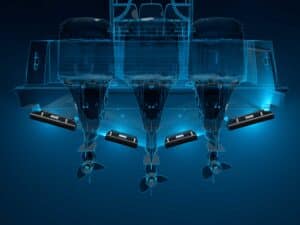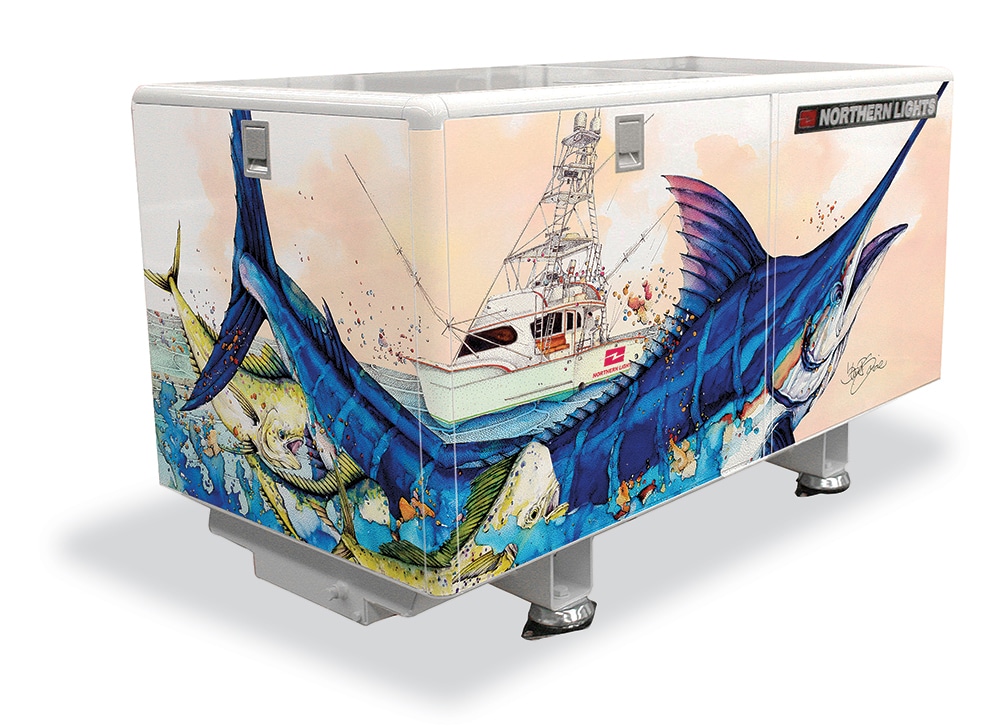
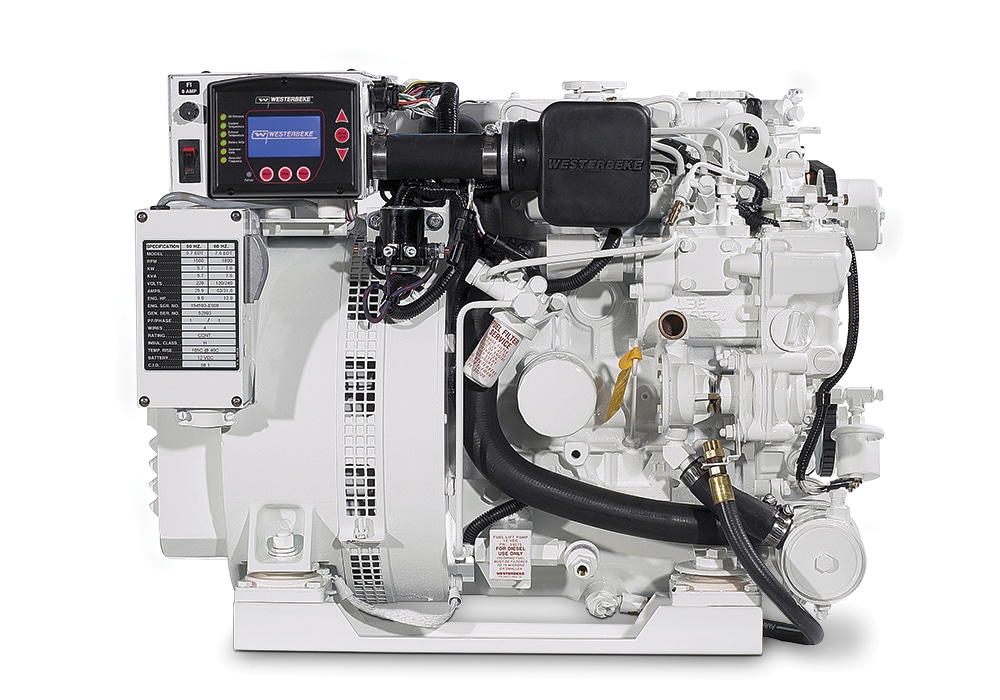
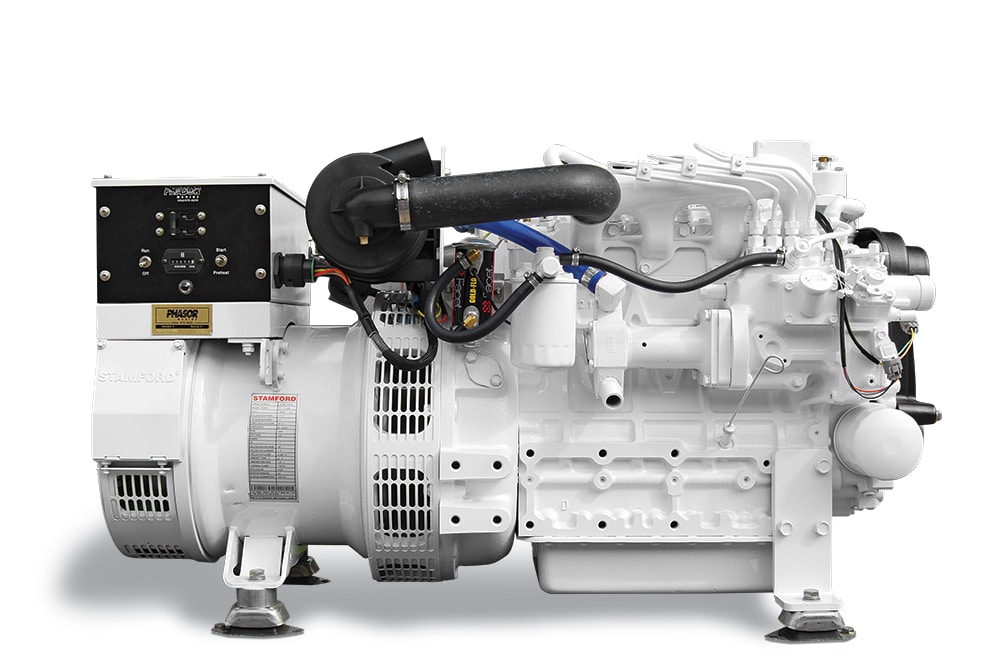
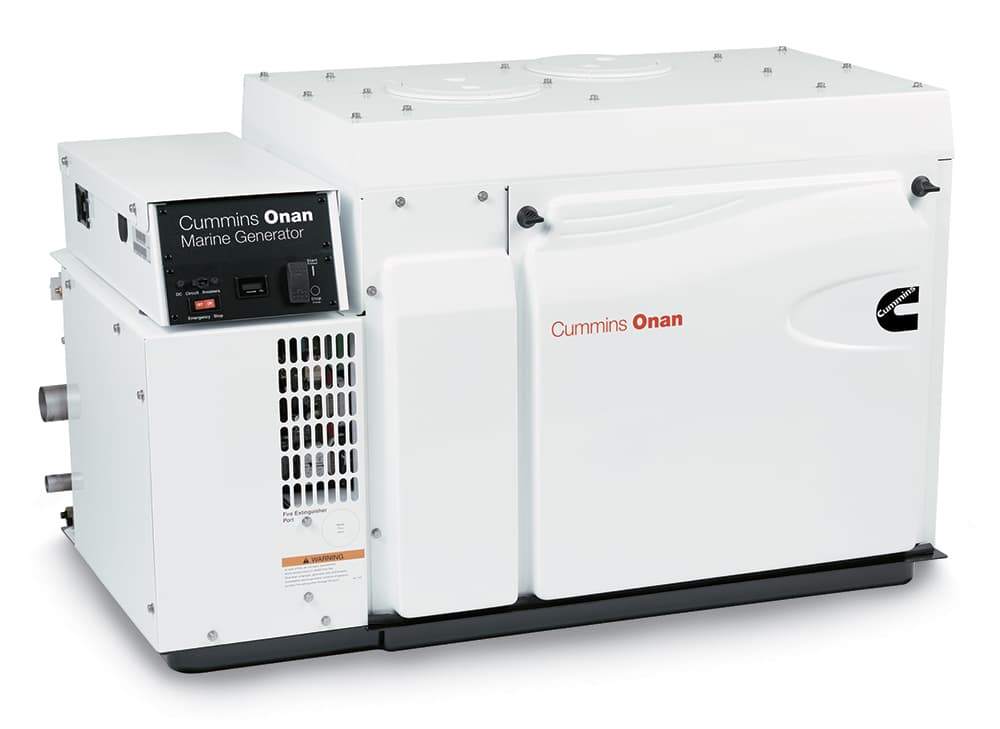
The first charter boat I worked on in the mid-1970s didn’t have a boat generator. We had a transom fish box and drink coolers that we loaded with blocks of ice every morning. The first boats that did have generators always seemed to have units buried somewhere in the engine room or cockpit with marginal access for service, and the units were usually too small for the loads they tried to carry.
Part of that was due to boats not having enough room for generator units to accommodate the continually growing power demands of the evolving sport-fisherman. Power consumers such as refrigerators, freezers and multiple air-conditioning units required more juice than the smaller kilowatt units could provide. Another large factor was the lack of options in marinized generator units; the market was just not that big.
Today, builders are keenly aware of the complex systems and massive amounts of power needed to run a modern sport-fisherman. Most custom and production builders do a great job of engineering these power plants into the boat, allowing enough room to service them fairly easily. In addition, the units can provide the power needed when all systems are online -— even the dreaded blow-dryer, which is probably responsible for more blown breakers than just about anything else.
Boat generator manufacturers must build their products to the latest Tier 3 EPA emissions standards, so common-rail engines, electronically controlled fuel systems, NMEA 2000 databus vessel communication and electrical ends have been integrated into the marinized editions of their products.
With all the advancements in engine systems and electronic-output controls, the one area still lacking from manufacturers is a sound shield hush-box system that is easy to remove, assembled with service panels that can be quickly disassembled and reassembled, along with an insulation that does not slowly disintegrate into tiny bits of waste. Some current hush-box configurations resemble a child’s attempt with an incomplete erector set: just too many bolts, poorly placed panels that do not allow easy visual inspection on a daily basis, poor quality pot-metal fasteners and insulation that does not hold up under high heat conditions.
Many folks also have difficulty with raw-water pumps and impellers. Some generators use up impellers in 150 to 200 hours; between 300-350, the seals are gone and the entire pump must be replaced. This is not satisfactory. Changing to pumps with ceramic seals as opposed to rubber seals and evaluating water flow to get the -correct impeller can alleviate some of these short cycles in impeller and pump life. Keeping daily use records with hours and visual inspection notes in the machinery log will help you keep a handle on these kinds of issues.
When choosing a new or replacement generator, several criteria must be considered to ensure you are getting the right unit. Adding up the entire amperage requirement on the boat will tell you what size unit you need. With multiple refrigeration/freezer units, several tons of chilled air and air -handlers, ice makers, cooktops, microwaves, battery chargers, raw-water pumps, head systems and other necessities that today’s boats require, getting enough juice to supply uninterrupted power is essential for equipment to operate properly. This, along with making sure the unit will fit in the space allotted will help determine the best unit for your needs. Evaluating raw-water feed and fuel-input needs can be adjusted and reconfigured to fit your new unit should they not line up exactly.
The Latest New Generators
Manufacturers have a host of new gensets suited for marine use including longtime supplier Northern Lights with its powerful M944T3 Tier 3-compliant 40 kW unit. With a 1,400-pound weight savings and 50 percent less overall volume than previous generations, the 40 kW unit is an ideal fit for larger sport-fishing boats as a single or with a tandem unit. With a high torque, direct fuel-injected turbocharged engine, the M944T3 can be customized with options and accessories to fit most applications.
For smaller boats with lesser power requirements, Westerbeke has introduced a 6.5 kW unit powered by a .95 liter, three-cylinder engine that runs at a low 1,800 rpm for quiet operation, with a 50-amp battery-charging alternator as opposed to a capacitor regulator typically found in smaller units. It features electronic governing to keep a constant voltage when applying or shedding load, as well as digital controls to easily monitor key functions. A host of standard features include over speed, under speed, low oil pressure, high exhaust and coolant temperature safety shutdowns. You also get a NMEA 2000 databus with an optional sound guard, featuring a stainless-steel base and frame offering full access to all sides of the unit.
In the 1920s, David Onan began building generators for home use; today, Cummins Onan builds units for all types of applications, including marine use. The Quiet Diesel Series includes a 19 kW MDKBV unit with a bevy of standard features: digital-electronic controls, sensor-driven auto shutdowns for high coolant and exhaust temperatures, low oil pressure, over speed and voltage, along with raw-water flow. The electronic governor allows the unit to maintain frequency control; close-voltage regulation provides continuous power for digital appliances and computers.
Phasor Marine boasts Kubota engines, and its 15 kW K4 is a good midsize option for many marine applications. A low 1,800-rpm operating speed from the four-cylinder 122-cubic-inch engine and safety shutdowns for high coolant, low oil pressure, as well as a freshwater double-pass heat exchanger, a stainless-steel exhaust elbow, a Racor fuel/water separator and a self-bleeding fuel -system make this a popular option.
Having enough reliable power is paramount to any operation’s success. Knowing how to get what you need to fulfill power needs onboard will go a long way toward securing the generator that’s right for you. Using the tools that each manufacturer offers in addition to comparative analysis and experience will lead you to your best solution.



